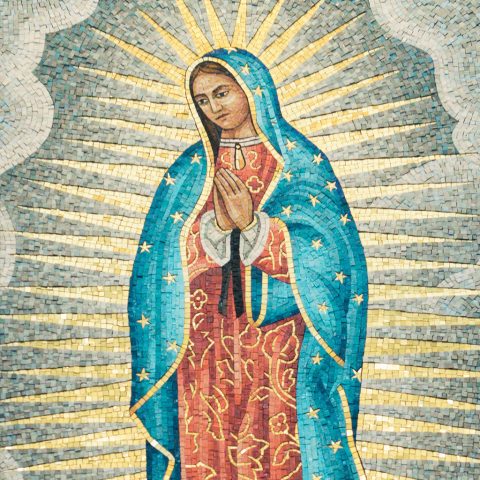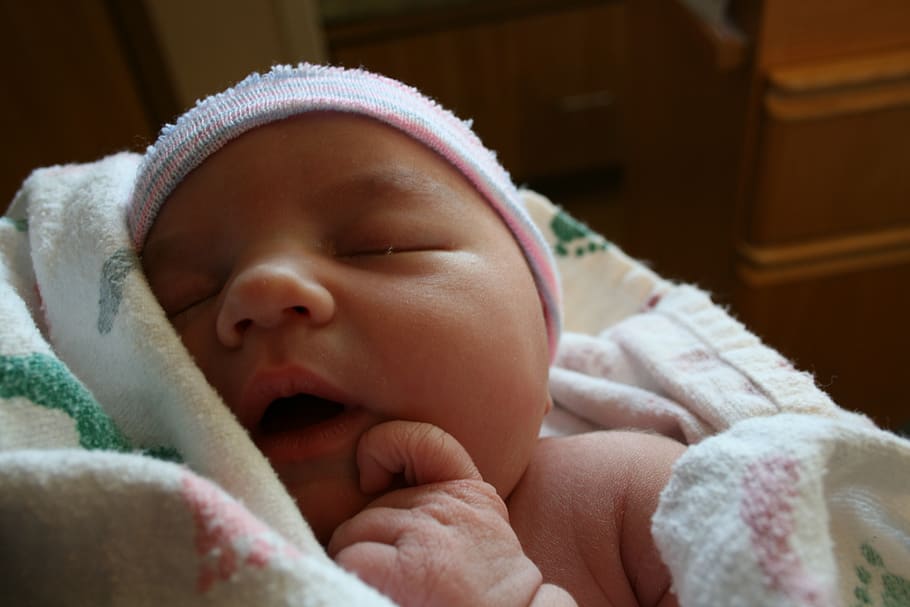 One of the most comforting aspects of the Catholic Faith is the Communion of Saints. Scripture tells us about the “cloud of witnesses” that surrounds us. Even after physical death, the saints remain alive, and are even keenly aware of what is taking place on earth among the Church Militant (see Revelation 5:8). Some of the greatest indications of this communion of saints come in the form of Marian apparitions. These are moments when the Blessed Virgin Mary appears to us here on earth, letting us know that her prayers for us are being offered to God. It also reaffirms the fact that the Blessed Mother always points to her son. Just as she said at the Wedding Feast of Cana, “Do whatever he tells you”, in many of these apparitions she reminds us to do the will of Jesus Christ.
One of the most comforting aspects of the Catholic Faith is the Communion of Saints. Scripture tells us about the “cloud of witnesses” that surrounds us. Even after physical death, the saints remain alive, and are even keenly aware of what is taking place on earth among the Church Militant (see Revelation 5:8). Some of the greatest indications of this communion of saints come in the form of Marian apparitions. These are moments when the Blessed Virgin Mary appears to us here on earth, letting us know that her prayers for us are being offered to God. It also reaffirms the fact that the Blessed Mother always points to her son. Just as she said at the Wedding Feast of Cana, “Do whatever he tells you”, in many of these apparitions she reminds us to do the will of Jesus Christ.
But how does an apparition get approved as being worthy of belief? This piece will bring to light what the Church teaches on the matter, and also reflect upon some of the most well-known (and approved) apparitions, as well as placing a spotlight on those you may not be as familiar with.
Christ Is the Fulfillment
Back in 1978, the Holy See released “Norms Regarding the Manner of Proceeding in the Discernment of Presumed Apparitions or Revelations”, which detailed how the Church responds to claims of Marian apparitions. As many Christians know, all public revelation ceased with the death of the last apostle, St. John the Evangelist. Since that time, the Holy Spirit has continued to guide the Church into all truth. While there are no more public revelations, we as Catholics still have room to grow in our understanding of God’s revelation to the world. So if Revelation is already complete, where do “private” revelations, such as Marian apparitions fall in? The Catechism of the Catholic Churchprovides us with valuable insight:
“Throughout the ages, there have been so-called ‘private’ revelations, some of which have been recognized by the authority of the Church. They do not belong, however, to the deposit of faith. It is not their role to improve or complete Christ’s definitive Revelation, but to help live more fully by it in a certain period of history. Guided by the Magisterium of the Church, the sensus fidelium knows how to discern and welcome in these revelations whatever constitutes an authentic call of Christ or his saints to the Church.
“Christian faith cannot accept ‘revelations’ that claim to surpass or correct the Revelation of which Christ is the fulfillment…” (CCC 67)
All Approved Marian Apparitions Are Important
Whenever Our Lady appears in those visions which are deemed worthy of belief by the Church, we see that she never contradicts the gospel or the authority of the Church that her divine Son founded. In many cases, Our Lady often asks the visionary in question to collaborate with the bishop, asking that nothing be done without his authority. As it turns out, the criteria for judging the character of any presumed apparitions, found in the Vatican’s norms linked above, includes an instruction stating that the subjects must have “sincerity and habitual docility towards Ecclesiastical Authority”. Some of the “negative criteria” include doctrinal errors attributed to the Lord, or Our Lady, or any of the saints. Suffice it to say, if an alleged apparition is contradicting the Church or divine Revelation, no matter what positive fruits may be coming from it, you can be assured that the apparition does not originate from God.
When it comes to actually approving the apparition as something that can be venerated by the faithful there are a couple of different routes the Church can go. In the first place, “the duty of vigilance and intervention” falls to the local Ordinary, that is, the bishop. If he so chooses, the bishop can have the regional or national conference of bishops intervene so that he can have help in judging the veracity of the apparition with greater certitude. And finally, the Apostolic See can intervene if asked directly by the bishop, or if the Pope chooses of his own accord to do so by his own authority. The Congregation for the Doctrine of the Faith can also intervene “in graver cases, especially if the matter affects the larger part of the Church, always after having consulted the Ordinary and even, if the situation requires, the Conference of Bishops.”
With that being said, below is a brief dive into five Marian apparitions that have been officially approved by the Holy See. Each of these apparitions have been deemed as worthy of belief, but in no way must any Catholic be compelled to venerate Our Lady under such titles. All that the Vatican and bishops have done is confirm that there is nothing contradictory to the Faith in the messages that have emerged from the apparitions, that the visions are credible, and that the Blessed Virgin Mary can be venerated under that specific title attributed to her. Some of these apparitions may be familiar, but others that are less familiar to us are no less important in what they contain.
1. Our Lady of Guadalupe
This particular apparition is one of the most well-known throughout both the Catholic and secular world. In the year 1531, St. Juan Diego received visions of Our Lady on a hill near Mexico City. The site actually used to house a pagan temple where human sacrifice was conducted. Our Lady instructed St. Juan Diego to seek out the Bishop of Mexico, asking him to build a church on the very spot our Lady had appeared. When St. Juan Diego first sought out Bishop Juan de Zumárraga, the bishop asked that he bring back a sign from Our Lady. Our Lady again appeared to St. Juan Diego, and when he appeared before the bishop again, he unfolded his tilma, revealing not only flowers that were out of season, but also a miraculous image—which we now know as Our Lady of Guadalupe—superimposed on the fabric. Despite being nearly five centuries old, the tilma has shown no sign of degradation, and the miraculous image is still venerated by scores of pilgrims each year. On October 12, 1895, Pope Leo XIII led a canonical coronation of Our Lady of Guadalupe, and she has also been recognized as the patroness of the Americas, and of Mexico in particular. The Feast of Our Lady of Guadalupe falls every year on December 12, which is the final day she appeared to St. Juan Diego.
2. Our Lady of La Salette
Unlike other popular apparitions, the Blessed Virgin Mary under the title of Our Lady of LaSalette appeared only one time. In 1846, Our Lady appeared to two small children tending sheep in the French Alps, eleven-year-old Maximin Giraud and fourteen-year-old Melanie Calvat-Mathieu. They came across a woman sitting with her elbows on her knees and her face buried in her hands, crying. She talked of the conversion of sinners and of her son’s displeasure with the many sins and offenses that were being committed against him. She entrusted two messages to the children, which can be read here, calling for Christians to respect the Holy Name of Jesus and to keep the Sabbath Day holy by refraining from work. On the 150th anniversary of the apparition, Pope St. John Paul II wrote to the Bishop of Grenoble:
“LaSalette is a message of hope, for our hope is nourished by the intercession of her who is the Mother of mankind.”












